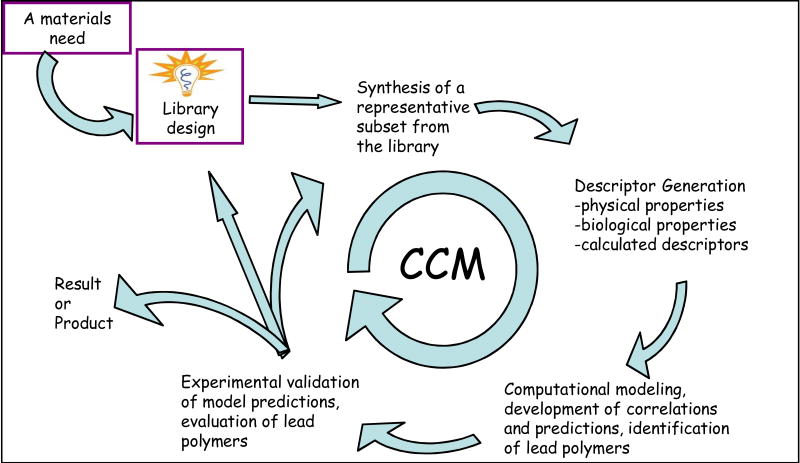Figure 4.
One of many possible implementations of the combinatorial-computational method (CCM) for biomaterials discovery: The CCM usually starts from a well-defined materials need. Based on this materials need, a virtual library of polymers is designed. This library can contain thousands of polymers as long as all polymers in the library share some common structural features. Using parallel synthesis, a small subset (usually less than 100) of library polymers are synthesized and characterized. This characterization leads to the collection of both experimentally measured “data” as well as calculated “descriptors” of specific polymer properties. Experimental data and descriptors are then fed into a series of computational models, leading to predictions of polymer properties and performance for all members of the original polymer library. Based on these predictions a small number of “lead polymers” can be selected for synthesis and detailed characterization. This last step can have three principal outcomes: (a) the predictions were validated by experiment and the newly discovered “lead polymers” fulfill the initially identified materials need; (b) correlations between predictions and validation are not sufficiently accurate, requiring a second iteration of the CCM process to discover promising lead polymers; and finally (c) the predicted lead polymers perform so poorly that one can conclude that no appropriate materials are contained within this particular library, requiring the development of a new library concept. Copyright ©2007 New Jersey Center for Biomaterials. Reproduced with permission.

